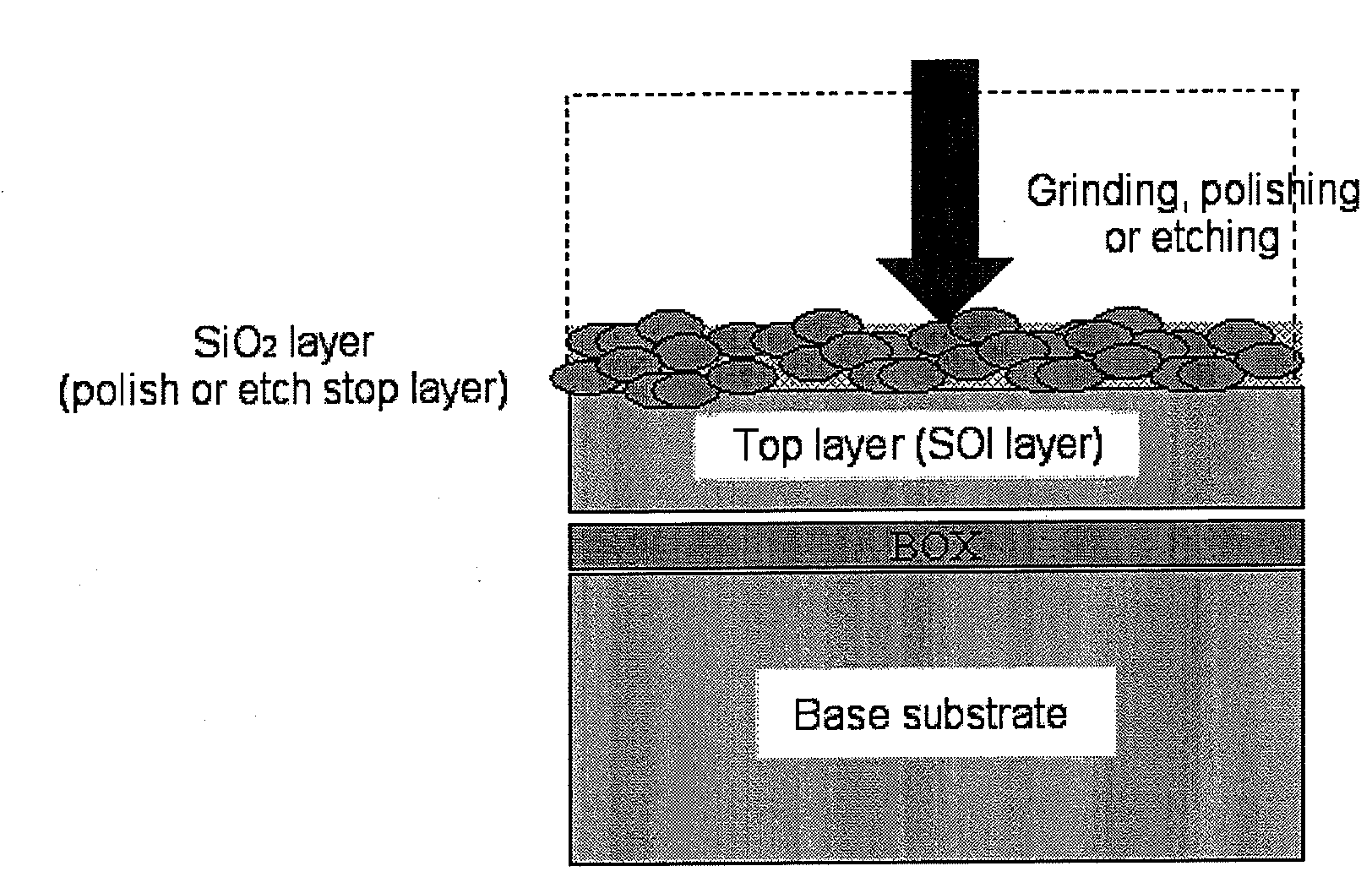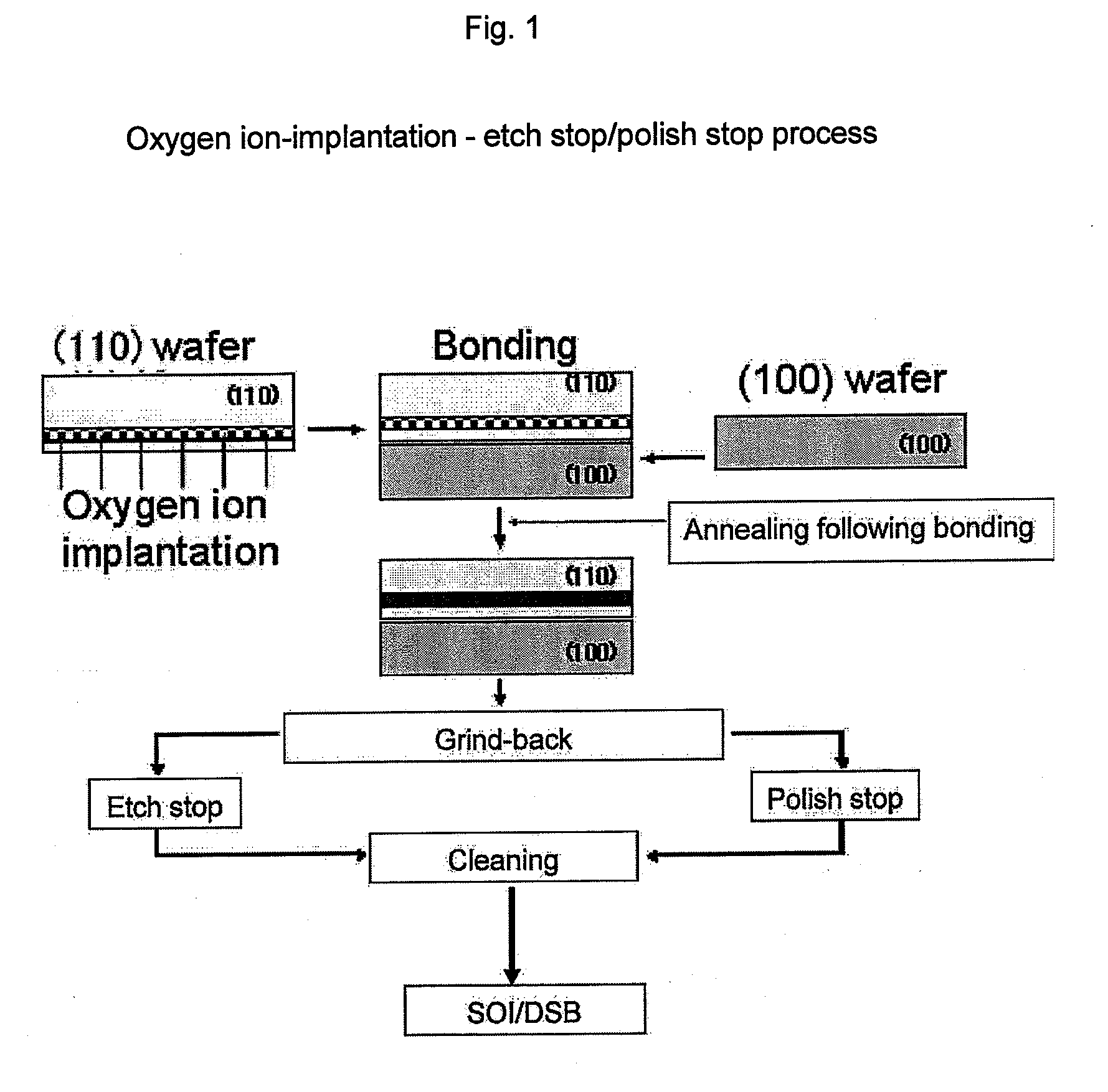Method of manufacturing bonded wafer
a manufacturing method and semiconductor technology, applied in semiconductor/solid-state device manufacturing, basic electric elements, electric devices, etc., can solve the problems of no improvement in roughness and no siosub>2 reaction, and achieve the effect of suppressing interface roughness and low surface roughness
- Summary
- Abstract
- Description
- Claims
- Application Information
AI Technical Summary
Benefits of technology
Problems solved by technology
Method used
Image
Examples
example 1
[0062]A bonded wafer with a SOI structure was fabricated by the following steps (1) to (9):[0063](1) A 300 mm base wafer was prepared. The 300 mm base wafer was a p-type wafer (100) with a substrate resistivity of 10 to 20 Ωcm and had a BOX layer (1,500 Angstroms) formed by heat treatment in an oxygen atmosphere for 5 hours at 1,000° C.[0064](2) A 300 mm active layer wafer (top substrate) was prepared. The 300 mm active layer wafer was a p-type wafer (100) with a substrate resistivity ranging from 0.001 to 10 Ωcm (as described, in detail, in Table 1) that had an oxygen ion implantation layer. The oxygen ion implantation layer was formed under conditions of an acceleration voltage of 180 keV, a dose of 2e17cm−2, and a substrate temperature of 100 to 500° C.[0065](3) The base wafer and active layer wafer were SC1 washed and bonded.[0066](4) Following bonding, a bond-strengthening heat treatment was conducted for 1 hour at 1,200° C. (in an oxygen atmosphere).[0067](5) The surface of th...
example 2
[0074]A bonded wafer with a DSB structure was fabricated by the following steps (1) to (9):[0075](1) A 300 mm base wafer was prepared. The 300 mm base wafer was a p-type wafer (100) with a substrate resistivity of 10 to 20 Ωcm.[0076](2) A 300 mm active layer wafer (top substrate) was prepared. The 300 mm active layer wafer was a p-type wafer (110) with a substrate resistivity ranging from 0.001 to 10 Ωcm (as shown in Table 1) that had an oxygen ion implantation layer. The oxygen ion implantation layer was formed under conditions of an acceleration voltage of 180 keV, a dose of 2e17cm−2, and a substrate temperature of 100 to 500° C.
Steps (3) to (9) were implemented in the same manner as in Example 1.
[0077]The evaluation results are given in Table 1.
TABLE 1Relation between resistivity and roughnessSurfaceroughnessRMSTop substrate[Angstroms]Structureresistivity [Ωcm](10 μm × 10 μm)1Comp. Ex.SOI1011.02Comp. Ex.SOI112.23Comp. Ex.SOI0.212.74Example ofSOI0.17.3present invention5Ex. ofSOI0....
PUM
 Login to View More
Login to View More Abstract
Description
Claims
Application Information
 Login to View More
Login to View More - R&D
- Intellectual Property
- Life Sciences
- Materials
- Tech Scout
- Unparalleled Data Quality
- Higher Quality Content
- 60% Fewer Hallucinations
Browse by: Latest US Patents, China's latest patents, Technical Efficacy Thesaurus, Application Domain, Technology Topic, Popular Technical Reports.
© 2025 PatSnap. All rights reserved.Legal|Privacy policy|Modern Slavery Act Transparency Statement|Sitemap|About US| Contact US: help@patsnap.com



